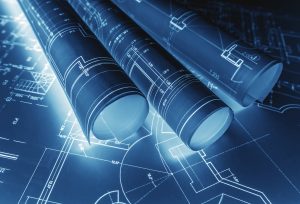High tech communication
When it comes to multilingual affairs for Technical subject matter, American Translation Partners facilitates communication for your specialized industry. Whether you are undertaking a Software Localization project into all major European languages or holding an international conference for computer hardware clients in the Middle East or considering Website Globalization for Asian countries, we provide accurate and professional Technical Interpretation and Translation Services in more than 100 languages.
Over the years, ATP has provided Technical language services for organization specializing in Advertising and Public Relations; Agribusiness and Chemical; Biomedical and Pharmaceutical; Computer Software and Hardware; Consumer and Industrial Electronics; Data and Telecommunications; Import and Export; Industrial / Commercial Machinery and Equipment; Insurance and Investigation; Legal and Financial; Multimedia and Internet; Government and Military; Petrochemical and Energy, Transportation and Aerospace.
The following is a list of areas that ATP is proficient in handling for Technical professionals:
- Website Globalization
- Software Localization
- Technical Conferences / Seminars
- Field Visitations / Training Courses
- User Guide, Administration Guide and Training / Operation Manuals
- MSDS
- Warning Labels
- Trouble Shooting Documents
In order to provide accurate figures and Get A Quote, we typically have a few questions regarding your requirements. If you could take a moment to call toll free in the US @ 1.888.443.2376 , outside of the USA @ 1.508.823.8892 or email us , we will be able to respond to your request quickly. Our quotes are free and typically provided within a day of our request.
Technology Website Globalization
“Globalization” is the process of making your Website accessible and appealing to foreign users. ATP can translate all facets of your Web presence – including content, brand name, code structure and META tags – to give your company the power to reach an international audience.
Preparing your Website for complete globalization involves several components:
- Developing a company lexicon for each language;
- Brand name analysis of proprietary terminology;
- Translation and review of the site content into your target audience’s language(s);
- Adapting the Website’s style, graphics and cultural conventions (such as currencies, dates, units of measurement, etc…);
- Implementing code structure for CJK (Chinese, Japanese and Korean) languages;
- Creating META Tag files supporting each Website page;
- Submitting your Website to foreign search engines.
Some organizations will also need to conduct legal / market research for compliance with international trade laws. The Website globalization process is modifiable to accommodate your company’s budget. The information below offers some insight to the key elements involved in Globalization – also called internationalization or localization.

Five years ago, 80% of the people online were browsing in English. Today, only 50% of the people online are browsing Websites in English. At this rate it is likely that 2/3 of the people online will be looking at non-English Websites by 2003.
Planning and implementing multilingual Websites and materials is the key to a successful Internet or corporate venture. Allowing your visitors to select their choice of language to browse your Website will certainly bring in a wider audience’s reception.
Utilizing local habits and preferences to develop Websites for foreign visitors will promote relationships with potential clients that are only comfortable with viewing content in their native language. Yahoo and AltaVista are getting local with their search engines and cashing in on the foreign sales. It is time to consider the future of international business opportunities for your organization!
Code Structure
Webmasters need to decide whether Unicode or Double-Byte Character Set code should be used. The latter code is utilized in the globalization of Websites translated into CJK (Chinese, Japanese or Korean) languages, where Single-Byte code cannot represent the large character sets used in those languages. All other Romance language using Roman characters only requires Unicode.
If the selected code is a Double-Byte character set, the character set used for each language will need to be specified within the HTML source code. For example, Websites that are going to be translated into Simplified Chinese, the most common encoding is “Big5” and for Japanese sites, “shift_jis” is used.
Local settings are specific to each cultural group that uses the same language. For example: the Spanish language is used in many countries but some of the countries that speak Spanish use different currencies, time, address formats, etc… This can be especially important if you have a very active e-commerce site with users from many different countries.
Enumerating files for translation will facilitate a smooth transition for content dissemination. It is also beneficial to separate Website code from the strings of translatable text. This will prevent translators from making errors such as omitting some of the text that needs to be translated, or from translating the code itself. In addition to extracting and enumerating text strings for translation, creating uniform file naming conventions and hierarchy between ATP and your company will make the content easier to manage. For example, all English source MS Word DOC files will have the file name in lower case letters with the suffix of “_eng.doc” and the Spanish translated files will be titled with the same English source file name and the suffix “_spa.doc”.
Content Development
Write the English content for your site in an unambiguous fashion. Keep in mind that it is especially difficult to translate humor, ethnic / cultural and historical references as well as colloquialisms. Inappropriate language usages will not only slow-down the project, but also create problems for the translation team. In most cases, such sections of text will have to be rewritten and stylized for international audiences.
Keep your terminology consistent throughout all your materials, especially when referring to similar concepts in different areas of your Website. Use industry-standard terminology instead of technical jargon; otherwise, it may be confusing for translators and foreign visitors.
Consistency and uniformity of the text are essential elements for an accurate and expeditious globalization process. Development of a company lexicon for source and targeted markets should be shared readily, not kept secret. The lexicon development is one of the first steps before translating the Website content.
Almost every foreign language takes up more space than English text. Provide approximately 30% additional space for foreign text expansion. This is particularly important when dealing with cells in tables, forms or graphics. For example, in Hiragana and Katakana (Japanese characters), you will require twice the space for proper names that include the text in English (within parenthesis), as well as the Japanese translation. Typeface clarity, size, text direction, and other conventions will also create a need for more space than the source text, especially for text strings with character limitations. Create adaptable content so users from abroad can select different systems of measure, time, date, and currency formats. The ease with which your site is understood and fluidity of navigation will encourage visitors to return.
Starting the Translation Process
Once your Website is prepared for globalization, the actual translation process begins. It is extremely important to have periodic communications between your translation team and the original developers of the content for the Website. Identify all involved members, share contact information and establish the preferred methods of communication. For example, email with Adobe PDF file attachments with Netscape Communicator.

Remember to allow the same (if not more) time for globalization into foreign languages as utilized in creating the source versions of the documents, collateral or Websites. Proper translation needs to put through the same meticulous review process as utilized when writing your source texts.
Schedules and deadlines are essential to help both parties understand their responsibilities and know what date(s) they need to provide deliverables. Discuss the time frames with your in-house project manager and translation team’s project manager; check for feasibility and make backup plans.
Deliverables will be sent via email, hard-copy or any other type of peripheral (CD, JAZ, ZIP or Floppy).
Audio / Video and Animation Files
For Audio / Video and Animation files you will need to know: how many, how large, format (.avi, .mpg, .mid, .wav etc.…), executables, soundtracks, sampling and bit rate, playback rate and if you want male and/or female voice-overs or subtitling.
Brand Name Analysis and DTP
It is advisable to conduct a brand name analysis to ensure that there is no offensiveness or confusion in your product(s) or company name.
Multilingual DTP (Desktop Publishing) for your manual(s) or product sheet(s) are also an option to consider. Typically, Adobe Acrobat PDF (Portable Document Format) files are the best method of transmitting and viewing multilingual documents. Creating files that support a multiplicity of formats and platforms will improve accessibility for international audiences.
Graphics Files
Store all graphics files in a different folder than the HTML or text files. This will make it easier to manage the Website during globalization. Indicate which graphics files contain text and require translation. If you do not do this, each graphics file will need to be checked by the translation team, which is time-consuming and costly. To save time, when designing your Website, put the text in a different layer than the background or foreground images so the translation team can change the text without altering the images.
Do not “flatten” images that contain text and/or may require modifications by translators. An image that has layers of text, art, and borders is easy to edit (re-size graphics and update with translated text). In flattened files, the translation team needs to clean up the source text and customize the graphics for implementation of the translated text.
Leaving sufficient space in the graphics files to accommodate text expansion will save time and money. Provide enough ‘white space’ in text frames so that translated strings of text will be able to fit.
Content Management
If desired, our Web Development partners in conjunction with ATP can develop a customized content management tool. This will serve as a back-end administrative application to allow simple updating of the various sections requiring routine maintenance. This type of system is browser-based and does not require the knowledge of HTML, any other web language, or additional software. Staff using this tool will be designated by the user management system described below. There could be significant savings of both cost and time using a content management tool for translating your site versus coding each individual page. Plus, over time it will reduce the time and cost of keeping your content in any language up to date.
Completing the Website Globalization
Some of the other considerations your company must decide upon include: Website registration in foreign countries; search engine submittal; advertising and marketing your new multilingual materials; and printed materials (DTP).
Additionally, you will also need to determine how you are going to handle your multilingual content and materials within your own organization. Your organization may require in-house assistance from one or more language professionals. If you have an in-house translator, make sure they are equipped with the appropriate software and system requirements to handle multilingual content and materials. It is likely that your organization does not have all of the resources to handle the variety of challenges that exist in globalization. For example, you will need to have text converters, foreign language dictionaries, and multilingual fonts to view files. Plans to appropriate the use of foreign leads and dissemination of localized software or translated marketing collateral is accommodated for with the professional language support and assistance of American Translation Partners.
Technology Software Localization
Preparing your Software for localization involves several components similar to Website Globalization:
- Developing a lexicon of technical and proprietary terminology for each language;
- Brand name analysis of proprietary terminology and Software titles;
- Translation and review of the User Guide, Administrative Guide, and Training Manual into your target audience’s language(s);
- Adapting the Software’s style, graphics and cultural conventions (such as currencies, dates, units of measurement, etc.…);
- Implementing code structure for CJK (Chinese, Japanese and Korean) or any other languages that do not utilize Unicode.
Some organizations will also need to conduct legal / market research for compliance with international trade laws in conjunction with the distribution and sales of their Software.
The Software Localization process is modifiable to accommodate your company’s budget. The information below offers some insight into the key elements involved in Localization. also called internationalization or globalization.
Code Structure
See Above
Content Development
See Above
Starting the Translation Process
Once your Software is “frozen” (completed, and not going to change until the next version), the actual translation process begins with the Software text strings, Resource files, User Interface (UI), User Guide, Administrative Guide, Training Manual and Help Files. It is extremely important to have periodic communications between your translation team and the original developers of the Software. Identify all involved members, share contact information and establish the preferred methods of communication. For example, via email with MS Word DOC file attachments with Internet Explorer.
Provide American Translation Partners with a list of the fonts utilized within the User Guide, Administrative Guide and Training Manual as well as fonts within any of the graphics files. Matching conventions from the source language to the target language should be determined at the beginning of the project to avoid unnecessary revisions.
Remember to allow the same (if not more) time for localization into foreign languages as utilized in creating the source versions of the documents, collateral or Software. Proper translation needs to put through the same meticulous review process as utilized when writing your source texts.
Schedules and deadlines are essential to help both parties understand their responsibilities and know what date(s) they need to provide deliverables. Discuss the time frames with your in-house project manager and translation team’s project manager; check for feasibility and make backup plans. Deliverables will be sent via email, hard-copy or any other type of peripheral (CD, JAZ, ZIP or Floppy).
Audio / Video and Animation Files
See Above
Brand Name Analysis and DTP
See Above
Graphics Files
See Above
Completing the Software Localization
Some of the other considerations your company must decide upon include: Software distribution in foreign countries; establish foreign market vendors; registration; advertising and marketing your new localized Software.
Additionally, you will also need to determine how you are going to handle your multilingual content and materials within your own organization. Your organization may require in-house assistance from one or more language professionals. If you have an in-house translator, make sure they are equipped with the appropriate software and system requirements to handle multilingual content and materials. It is likely that your organization does not have all of the resources to handle the variety of challenges that exist in localization. For example, you will need to have text converters, foreign language dictionaries, and multilingual fonts to view files. Plans to appropriate the use of foreign leads and dissemination of localized Software or translated marketing collateral is accommodated for with the professional language support and assistance of American Translation Partners.
Technology Interpretation
Consecutive and Simultaneous Interpreters are utilized required during Training Courses, Technical Conferences, Seminars and Field Visitations to assist foreign language speaking parties. Consecutive Interpreting is a repetition of the verbatim, inclusive of intonations and emphasis, immediately after the completion of a phrase or a couple of sentences. Simultaneous Interpreting is also a verbatim repetition of all communications, but the transmission of the multilingual content is repeated concurrently, within a fraction of second after a segment of a sentence or phrase. ATP offers Simultaneous Conference Interpreting equipment, qualified sound engineers and project managers for on-site support.
Interpreting for Technical professionals requires the knowledge of proprietary and industry-specific terminology; and sensitivity to cultural pitfalls of conducting business in foreign languages. ATP Interpreters prepare for interpreting assignments by reviewing company glossaries, presenters’ notes, papers, and website references. Our network of Interpreters have collectively worked on hundreds of thousands of legal proceedings in venues throughout North America and overseas. Moreover, through our international network of approximately 5,000 supplementary team members and affiliates, ATP provides Interpreters in any location around the world.
ATP routinely provides Accredited and Certified Federal and State Court Interpreters, as well as Certified ASL (American Sign Language) Interpreters for United States Federal and State Courts’ Proceedings, Depositions and International Conferences.
Technology Translation
A combination of personalized attention and a meticulous review process, with linguists for each document translation, ensures that you receive accurate translations. Every document we translate is GUARANTEED against Errors & Omissions and can be certified or notarized for acceptance by any court or government agency.
American Translation Partners utilizes an in-house translation staff and an international network of linguistic professionals. Translation teams consist of technical and creative individuals (bilingual attorneys, engineers, bankers, scholars and members of the diplomatic community) that work in unison to produce well-written translations. There are several members on any given Translation Project, including cultural researchers, certified and accredited native translators, typesetters, copy editors, proofreaders and project managers.
Technology Insurance and Confidentiality
ATP is fully insured by Lloyd’s of London Insurance for Errors and Omissions (E&O); and as for your concerns about confidentiality, we have a strict policy that each language specialist must sign and abide by the terms of our Non-Disclosure Agreement before working on any project.
Technology Rush Services
ATP can respond to the need for assistance with urgent matters and consequently offers Rush Services, Last Minute Requests and 24-Hour Emergency Support. These services are available at additional percentages above standard rates, depending on the specific circumstances and what service is needed. We will do our best to accommodate your unique situation.


